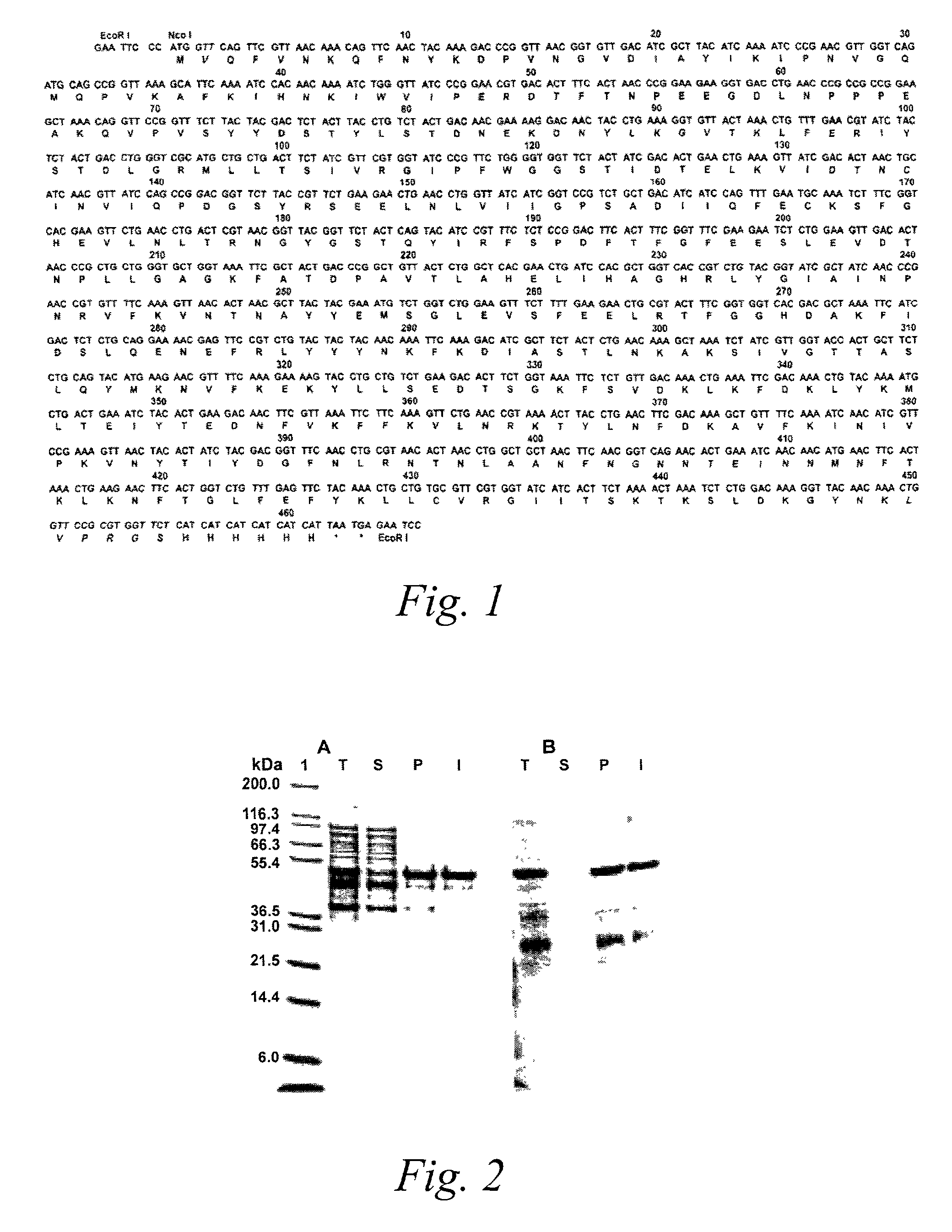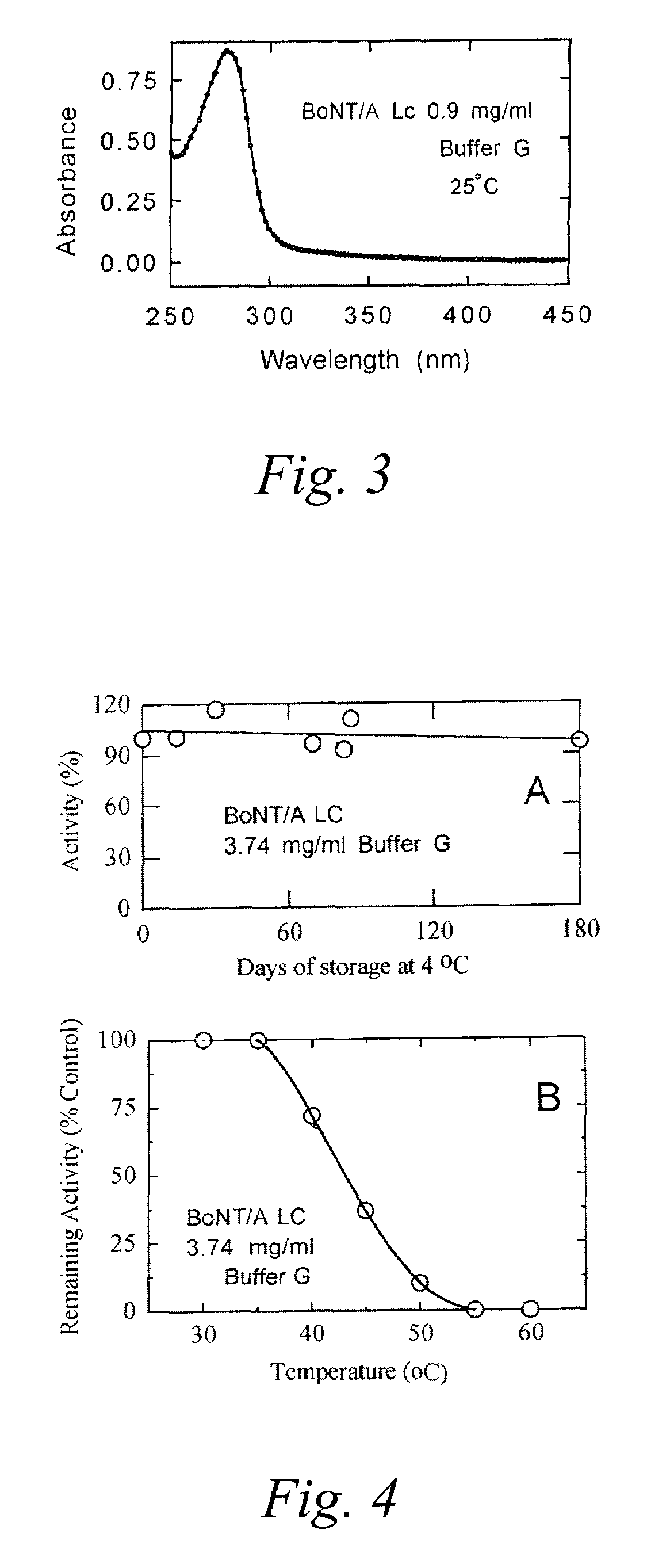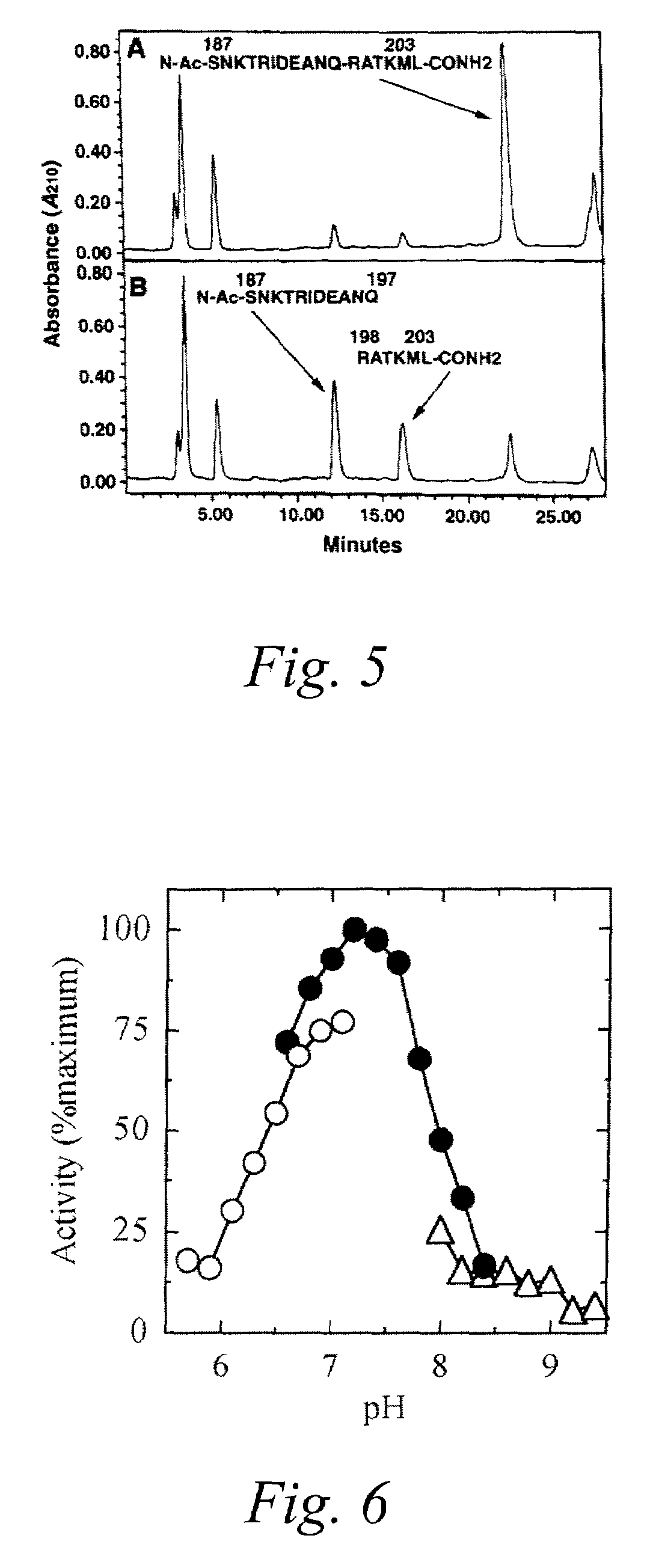Recombinant light chains of botulinum neurotoxins and light chain fusion proteins for use in research and clinical therapy
a technology which is applied in the field of recombinant light chains of botulinum neurotoxins and light chain fusion proteins for use in research and clinical therapy, can solve the problems of purified preparations, limited detailed characterization, and respiratory failure, and achieve the effect of lowering the high a+t rich base composition
- Summary
- Abstract
- Description
- Claims
- Application Information
AI Technical Summary
Benefits of technology
Problems solved by technology
Method used
Image
Examples
example 1
[0069]Chemicals, Buffers, and Reagents
[0070]Buffer T (20 mM Tris-HCl, pH 9.2) and buffer G (50 mM sodium glycine, pH 9.0) were used as indicated. SKL (sodium N-lauryl sarcosine or sarkosyl) was from Sigma. Highly purified (>95%) full-length BoNT / A was purchased from List Biologicals (Campbell, Calif.). Rabbit polyclonal antibodies against a 16-residue N-terminal sequence (PFVNKQFNYKDPVNGV; SEQ ID NO:1) of the BONT / A LC were produced and affinity purified by Research Genetics (Huntsville, Ala.). Peroxidase-coupled goat anti-rabbit and anti-mouse IgG (H+ L) and ABTS substrate were from Kirkegaard Perry Laboratories (Gaithersburg, Md.). Oligonucleotides, designed for E. coli codon usage (Anderson and Kurland, 1990) and ranging in size from 70 to 100 nucleotides, were synthesized by Macromolecular Resources (Fort Collins, Colo.).
example 2
[0071]Construction and Expression of a Synthetic DNA Encoding rBoNT / A LC
[0072]The DNA encoding the enzymatic LC domain of BoNT / A was assembled from three segments, a 335-base pair (bp) Sal I-Sph I fragment, a 600-bp Sph I-Kpn I fragment, and a 460-bp Kpn I EcoR I fragment. To construct the first segment, six oligonucleotide pairs were annealed, ligated, and, after PCR amplification, inserted into pGEM3Zf at Sal I-Sph I restriction enzyme sites. The second segment was built by annealing and ligating eight oligonucleotide pairs, followed by its amplification and insertion into the Sph I and Kpn I sites of pGEM3Zf. The final segment was constructed by annealing and ligating six oligonucleotide pairs, followed by its amplification and insertion into the Kpn I-EcoR I sites of pGEM3Zf. Nucleotide sequencing of gene fragments in pGEM3Zf was performed to identify clones in each group with minimal misincorporations. In vitro mutagenesis was performed to correct the misincorporations in the B...
example 3
[0078]Fermentation
[0079]A frozen stock seed culture of recombinant E. coli harboring the synthetic DNA encoding the LC of BoNT / A was grown at 37° C. to an OD600 of 2.682 in a shake flask containing 100 ml of the following defined medium: casamino acids (1.4 g / L); yeast extract (2 g / L); (NH4)2SO4 (1.85 g / L); K2HPO4 (30 g / L); MgSO4.7H2O (2 g / L); thiamine.HCl (0.015 g / L); glucose (18.1 g / L); trace elements solution (3 ml / L) consisting of FeCl3.6H2O, 27 g; ZnCl2.4H2O, 1.3 g, CoCl2.H2O, 2 g; Na2Mo4.2H2O, 2 g; CaCl2.2H2O, 1 g; CuCl2.2H2O, 1 g; H3BO3, 0.5 g; distilled H2O, 1000 ml; and HCl, 100 ml. In addition, 0.0156 g / L of ZnCl was added to trace minerals to make the concentration of Zn five times greater in the shake flask and fermentor. Kanamycin (50 μg / L) was added as an antibiotic. The shake flask culture was used to inoculate a 5-L BioFlo III fermentor (New Brunswick Scientific, Edison, N.J.) containing 4.3 L of the medium described above. Later in the growth (5.5 hr), 14.1 g / L of c...
PUM
| Property | Measurement | Unit |
|---|---|---|
| pH | aaaaa | aaaaa |
| pH | aaaaa | aaaaa |
| concentration | aaaaa | aaaaa |
Abstract
Description
Claims
Application Information
 Login to View More
Login to View More - R&D
- Intellectual Property
- Life Sciences
- Materials
- Tech Scout
- Unparalleled Data Quality
- Higher Quality Content
- 60% Fewer Hallucinations
Browse by: Latest US Patents, China's latest patents, Technical Efficacy Thesaurus, Application Domain, Technology Topic, Popular Technical Reports.
© 2025 PatSnap. All rights reserved.Legal|Privacy policy|Modern Slavery Act Transparency Statement|Sitemap|About US| Contact US: help@patsnap.com



